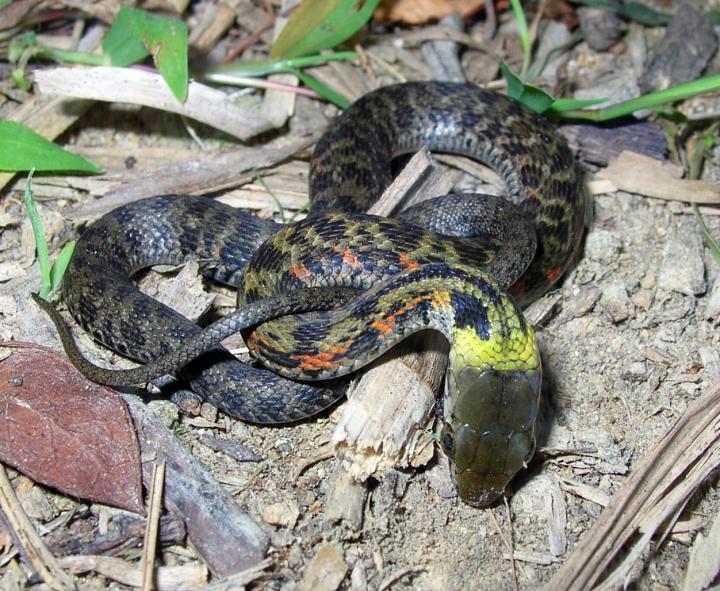A team of biologists has made a surprising discovery: a group of snakes switched from eating toads to eating earthworks so they can be poisonous to their own predators.

When it comes to the food chain, things are often complex. The predators do their best to hunt, the prey does its best to escape. But many animals are actually in between — they can hunt but also be hunted, and this is often challenging to balance things out.
Take herbivores, for example. They escape predators in several ways: either they’re fast, good at hiding, or just really big. But for a predator, becoming larger and larger isn’t a very efficient option (you need to hunt more, and you become more obvious to your prey). Being big might work on giraffes or elephants, but it makes for horrible hunting skills — which is why you don’t see many large carnivore species.
To balance offense and defense, some creatures go to weird lengths. Keelbacks, snakes belonging to the Rhabdophis genus, sport glands in their skin, sometimes just around the neck, where they store bufadienolides — a class of toxic steroids meant as a deterrent for their predators.
But they don’t produce these toxins themselves. Instead, the snakes take in the bufadienolides from the toads they eat.
“These snakes bend their necks in a defensive posture that surprises unlucky predators with a mouthful of toxins,” says Utah State University herpetologist Alan Savitzky, who has long studied the slithery reptiles.
“Scientists once thought these snakes produced their own toxins, but learned, instead, they obtain it from their food – namely, toads.”

However, some of these snakes don’t eat toads, they eat earthworms. So where do they get their toxins from?
According to observations by Savitzky and colleagues, these snakes also feast on species of fireflies — not to gain extra calories, but simply to gain the toxins produced by the fireflies (which happen to be the same as the ones produced by the toads).
Snakes wouldn’t normally eat fireflies, and fireflies are not nutritionally similar to toads. This is a remarkable example of snakes switching prey as a defensive mechanism, to protect against their own predators.
“This is the first documented case of a vertebrate predator switching from a vertebrate prey to an invertebrate prey for the selective advantage of getting the same chemical class of defensive toxin,” says Savitzky, professor in USU’s Department of Biology and the USU Ecology Center.
The study has been published in PNAS.


